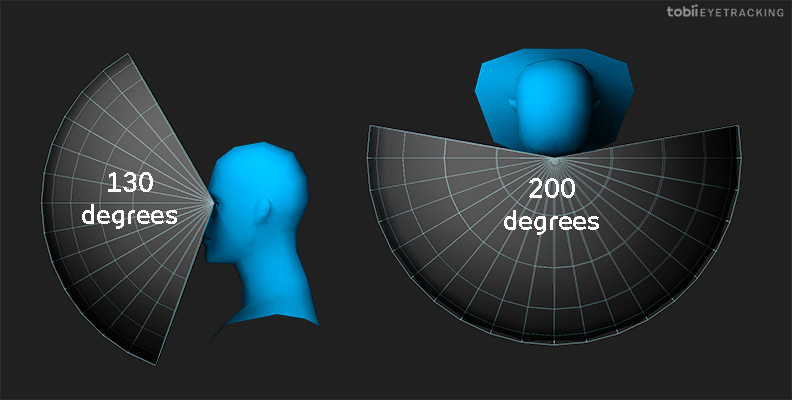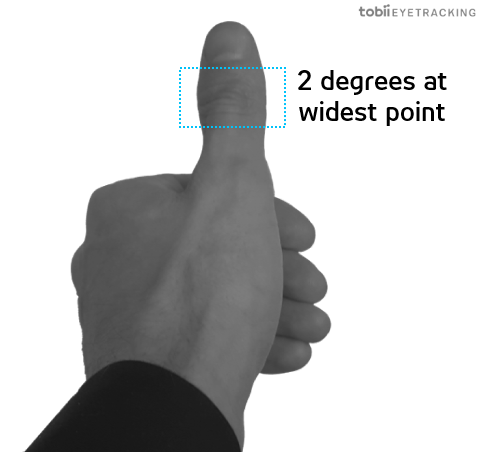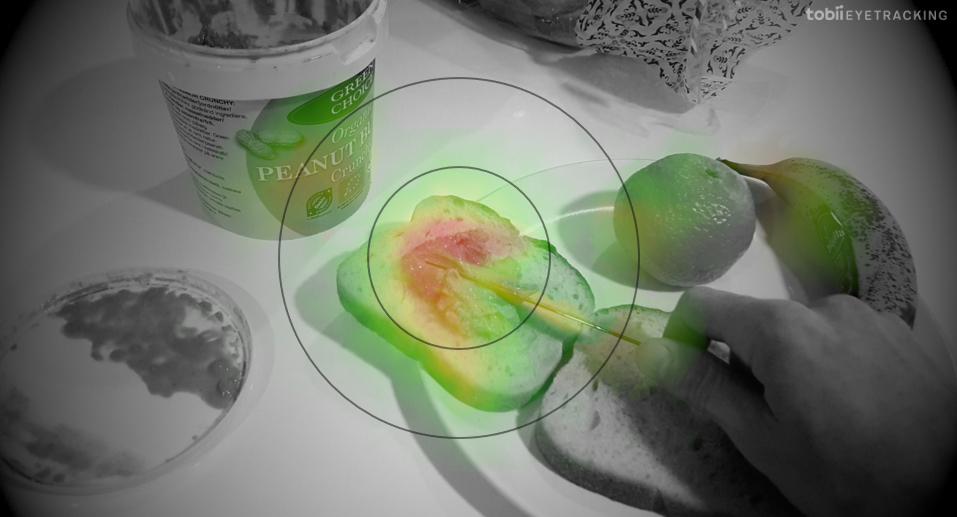Visual Angles
Human Anatomy and Visual Angles
On average, humans see 200° horizontally and 130° vertically.

Scientists utilize these degrees to measure perceived sizes of objects, called visual angles or angular size. For example: If something just covered your entire vision, you could call it 200° wide and 130° tall. So what is the size of one visual degree?
Your thumb is two degrees wide
Robert O’Shea showed that if you fully extend your arm and raise your thumb, its fattest width appears very close to 2 visual degrees wide. Unsurprisingly, this is the size of your fovea.

Use your thumb to explore angle sizes
Reach out and cover the thumb below with your own, then adjust the left slider below, called Thumb Size, until your thumb and the on-screen thumb are roughly the same size and position. Then, while still touching the screen, scoot back from your monitor until your arm is fully extended. You can remove your thumb, but remain at this distance from the screen:
From this position (at arm’s length), your thumb is about 2° wide. And your index finger-nail should be very close to 1°. For this study, it’s important to remain at your arm’s distance because visual angles are all about how much of your vision is filled by an object. Take a moment to experience other visual angle sizes here by moving the right slider, called Show Angle, and pay attention to the amount of your vision filled as you do so:
Humans Prefer to Look Straight Ahead
Humans tend to move their heads to minimize large eye movements. Tobii internal studies suggest that we keep our gaze inside of 20 degrees about 95% of the time, and usually will move our heads for angles larger than that. Research suggests humans behave similarly in the real world.

Further Reading
- The where, what and when of gaze allocation in the lab and the natural environment (Tom Foulsham, Esther Walker, Alan Kingstone, 2011)
- Amplitude of human head movements associated with horizontal saccades (J. S. Stahl, 1999)
